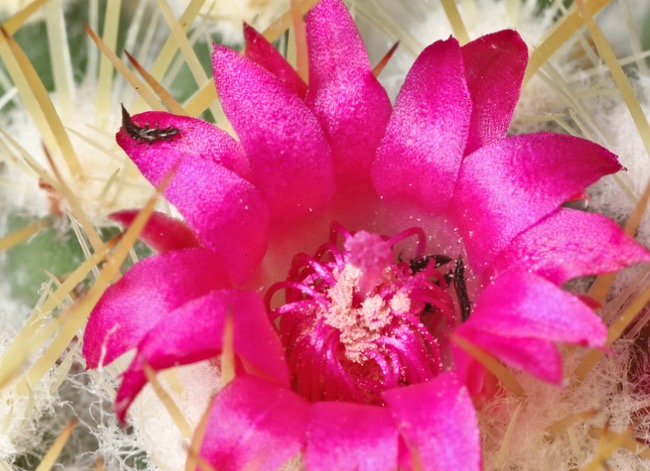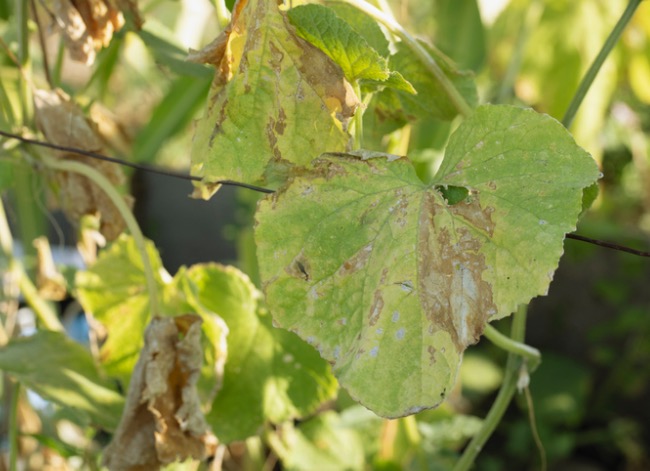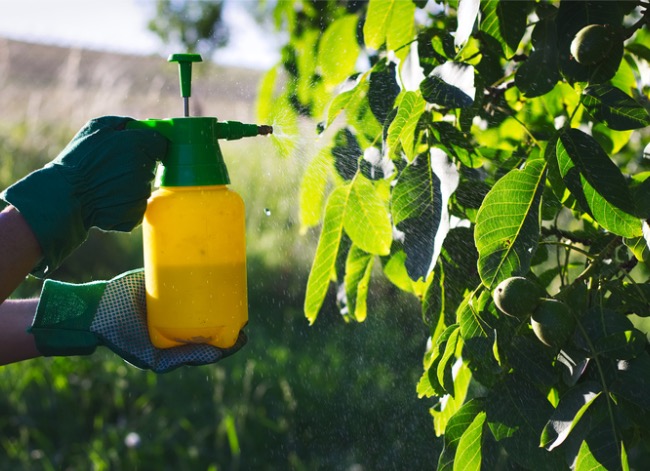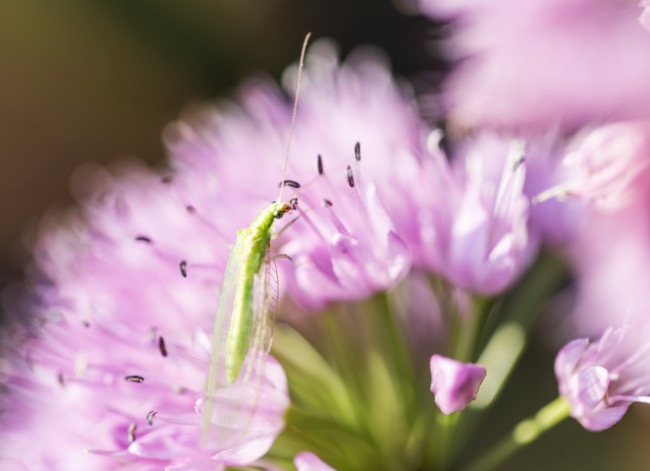

We may earn revenue from the products available on this page and participate in affiliate programs. Learn More ›
Many garden pests are easy to spot, but thrips often evade detection until they’ve completely taken over. This is due to their small size—less than 1/20 of an inch long. Despite their minuscule stature, thrips can do some serious damage to plants. By feeding off sap, they also can transmit pathogens, further weakening plants.
Though thrips live short lives, they reproduce readily and can plague plant owners with up to 15 generations in a single gardening season. Many species of thrips can attack plants, and most overwinter in garden debris and lay eggs in springtime. After about 5 days, the eggs hatch, and the feeding frenzy begins, lasting up to 3 weeks—that’s plenty of time to suck the life force out of once-healthy plants.
The tiny, thin insects vary in color and have small wings. Unfortunately, it can be tough to spot the pests, even when they’re present in large numbers. You’re probably more likely to notice thrip damage first. Signs include:
- Silver streaking on foliage
- Papery thin leaves
- White patches on leaves
Symptoms vary depending on the plant involved. Because thrips often transmit diseases, plants also might display other symptoms such as wilting foliage, poor growth, and leaf or fruit drop. If you suspect an infestation, sticky traps can help you identify and monitor the severity of the problem. Thrips species attack plants of all kinds. However, according to the University of California Integrated Pest Management Program (UCIPM), vegetable plants and herbaceous ornamentals are most vulnerable to thrip damage.
Don’t let these pesky insects get a hold of your garden or houseplants. Here’s how to get rid of thrips and keep them from decimating your precious plants.
Tools & Materials
Bobvila.com may earn a commission from purchases made through these links.
BEFORE YOU BEGIN
It’s much easier to prevent an infestation than to control one. But don’t panic if you suspect one or more of your plants is housing a family of thrips. Not all infestations result in serious damage or lead to diseased plant matter. So avoid bombing your garden with pesticides. Natural pest control solutions are always a better choice for your garden and the environment.
STEP 1: Remove infested leaves and stems.
Once you’ve spotted a thrips infestation, try your best to remove all the infested parts of the plant. In some cases, this might require heavy pruning. Also, remove any diseased or dead-looking foliage.
You can prevent an infestation in the first place by always thoroughly checking store-bought plants for signs of pest activity. If possible, quarantine new plants when introducing them into your home or garden. Do the same when bringing potted plants indoors for the winter.

STEP 2: Blast off bugs with water.
A simple way to get rid of thrips and other tiny, weak bugs is to use a garden hose to detach them from plant foliage. When doing this, it’s OK to blast the leaves directly. Otherwise, always make sure to avoid watering the leaves of a plant. Thrips like moist conditions, so plants with consistently wet leaves might attract them. You also can shake plants to dislodge thrips, but be careful not to get too rough.
Related: How to Get Rid of Aphids
STEP 3: Follow up with insecticidal soap or neem oil spray.
When applying either insecticidal soap or neem oil spray, you need to thoroughly spray all parts of the plants for maximum effectiveness, including flowers and the underside of leaves. You’ll also have greater success if you begin treatment as soon as you notice the presence of thrips. When using insecticidal soap, the Missouri Botanical Garden recommends spraying every 3 days until the problem is under control.
Apply neem oil every week or every other week, depending on the manufacturer’s instructions. Neem oil is also useful against other pests, including aphids, spider mites, leaf miners, and caterpillars. It also has some antifungal properties that can be helpful if thrips have transmitted a fungal infection.

STEP 4: Add blue sticky traps to kill adult thrips.
When using sticky traps to monitor infestations, use blue strips instead of yellow ones. Thrips are attracted to the color blue. Yellow traps will work in a pinch, but they are also more likely to trap other non-problematic insects.
You can start with yellow traps, though, since it will be easier to identify the pests on the light-colored surface. Place traps close to plants you think might be infested.
Related: The Best Pruning Shears, According to Testing
STEP 5: Welcome natural thrip predators.
Several predatory insects will happily feast on thrips and can help you prevent or control an infestation. Examples include:
- Green lacewings
- Pirate bugs
- Mites
- Parasitic wasps
To attract these predators, it’s important to avoid applying pesticides that might affect beneficial insect populations. Planting a diverse variety of plants in your garden makes it more likely that these bugs will make the space their home—or hunting ground. According to the UCIPM, releasing store-bought predatory insects is not as effective as attracting them naturally.

STEP 6: Prevent future thrip infestations.
Row covers are an effective way to keep pests away from plants while letting in some light and moisture. A very fine mesh netting will keep most insects at bay. The UCIPM also recommends applying reflective mulch around the base of vulnerable plants since the material makes it harder for pests to locate plants they want to munch on.
Here are some other ways to prevent a thrip infestation:
- Always check for pest activity before buying plants and bringing them home.
- Check on plants regularly so you can spot pests quickly before they become a problem.
- Water from below instead of getting water directly on the leaves.
- Remove heavily infested plant material to prevent thrips from affecting nearby plants.
- Plant pest-resistant varieties of plants that tend to become infested with thrips.
These strategies for getting rid of and preventing a thrip infestation should help you avoid any future thrip-related headaches. Although plenty of methods can effectively get rid of thrips, your best bet is to avoid them in the first place by using the strategies mentioned above.
Related: The Best Bed Bug Traps
